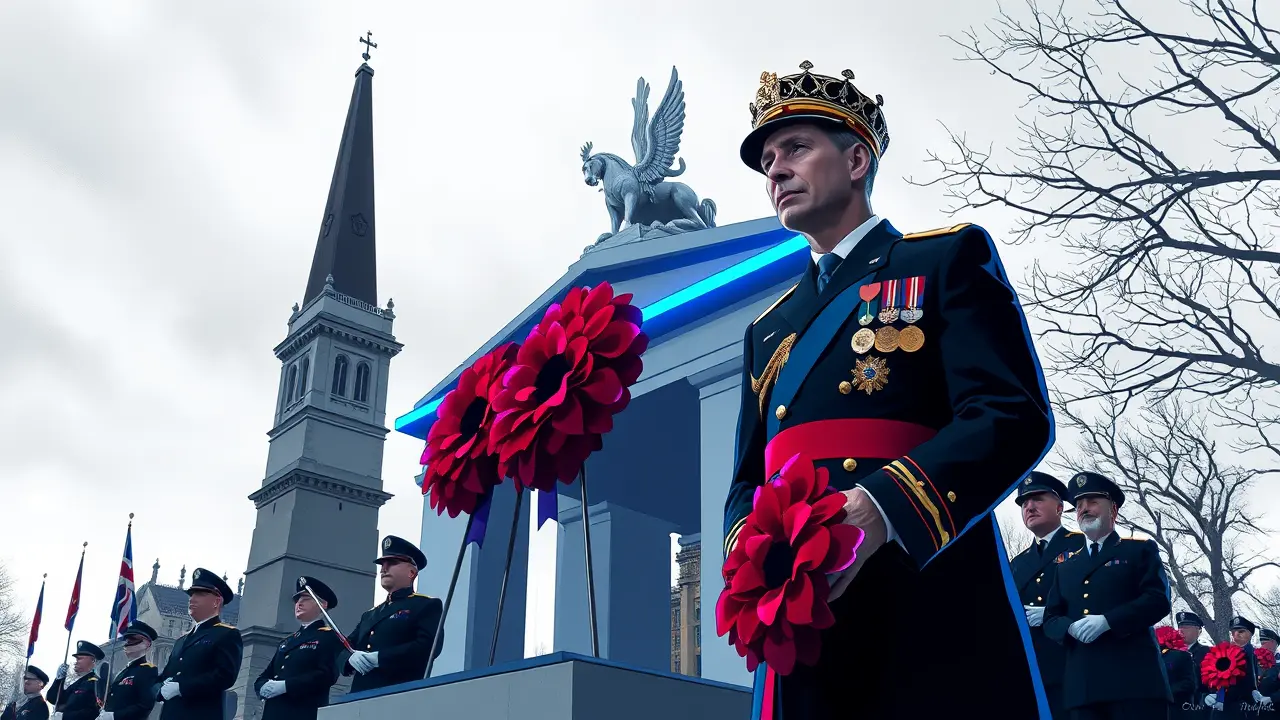
Politicsconflict & defenseWar Reports and Casualties
King Charles and Prince William Lead London Remembrance Ceremony.
RO
Robert Hayes
2 hours ago7 min read
Under a stark, grey London sky that seemed a fitting canopy for the occasion, King Charles III, his posture rigid with the weight of both crown and history, led the nation in its most sacred secular ritual: the Remembrance Sunday ceremony at the Cenotaph. This was not merely a ceremony; it was a pageant of national memory, a carefully choreographed ballet of state where every movement, from the precise placement of a wreath to the profound silence that engulfed Whitehall, carries the echoes of a century of sacrifice.The King, his personal poppy a splash of crimson against the solemn navy of his uniform, stood as the focal point, a successor to a lineage that has overseen this commemoration since its inception in the aftermath of the First World War. His wreath, a vast ring of scarlet blooms bearing the simple, powerful message 'In memory of the Glorious Dead,' was laid with a deliberate solemnity that spoke volumes, a silent testament to the continuity of the monarchy's role as the nation's chief mourner.Beside him, the Prince of Wales, representing both the future of the institution and the enduring martial spirit of the nation, mirrored the gesture, his own presence a bridge between the generations who fought and those who must remember their fight. The two-minute silence that followed was a remarkable phenomenon—a city of millions, a nation of tens of millions, collectively holding its breath, the only sounds the distant, mournful sigh of the wind and the fluttering of standards held by veterans whose lined faces were living maps of service.This act of collective remembrance, born from the depths of the Great War, remains one of the most powerful tools of national unity, a moment where political divisions dissolve in the face of a shared debt to the past. The thousands who lined the streets, many wearing their own family medals, were not passive spectators but active participants in this covenant of memory, their quiet presence a powerful rebuttal to the creeping amnesia of modern life.One cannot observe this ceremony without drawing a historical parallel to the leadership of Winston Churchill, who, during Britain's darkest hour, understood that the morale of a nation is inextricably linked to its reverence for those who fell in its defense. In an era of fragmented identities and global uncertainty, the Cenotaph stands as an immutable anchor, a white stone sentinel reminding all who pass of the ultimate cost of the freedoms they enjoy.The ceremony's flawless execution, from the march-past of veterans whose steps, though sometimes faltering, were filled with an undimmed pride, to the haunting notes of the Last Post, serves a dual purpose: it honors the dead, yes, but it also forges the living into a community bound by a common history and a collective responsibility to ensure that such sacrifice was not in vain. The analytical observer must conclude that this annual ritual is far more than a nostalgic look backward; it is a critical piece of national statecraft, a reaffirmation of the social contract between the people, the armed forces, and the Crown, and a potent symbol of resilience that will undoubtedly continue to define the British character for generations to come.
#King Charles III
#Prince William
#Remembrance Day
#Cenotaph
#London
#wreath-laying
#featured
Stay Informed. Act Smarter.
Get weekly highlights, major headlines, and expert insights — then put your knowledge to work in our live prediction markets.
© 2025 Outpoll Service LTD. All rights reserved.